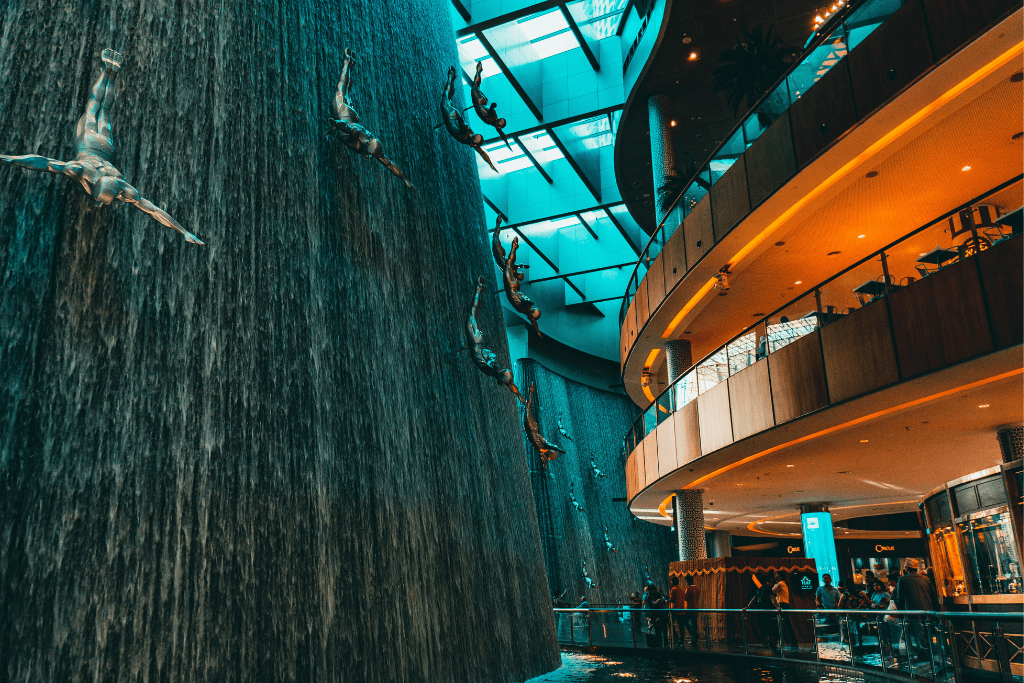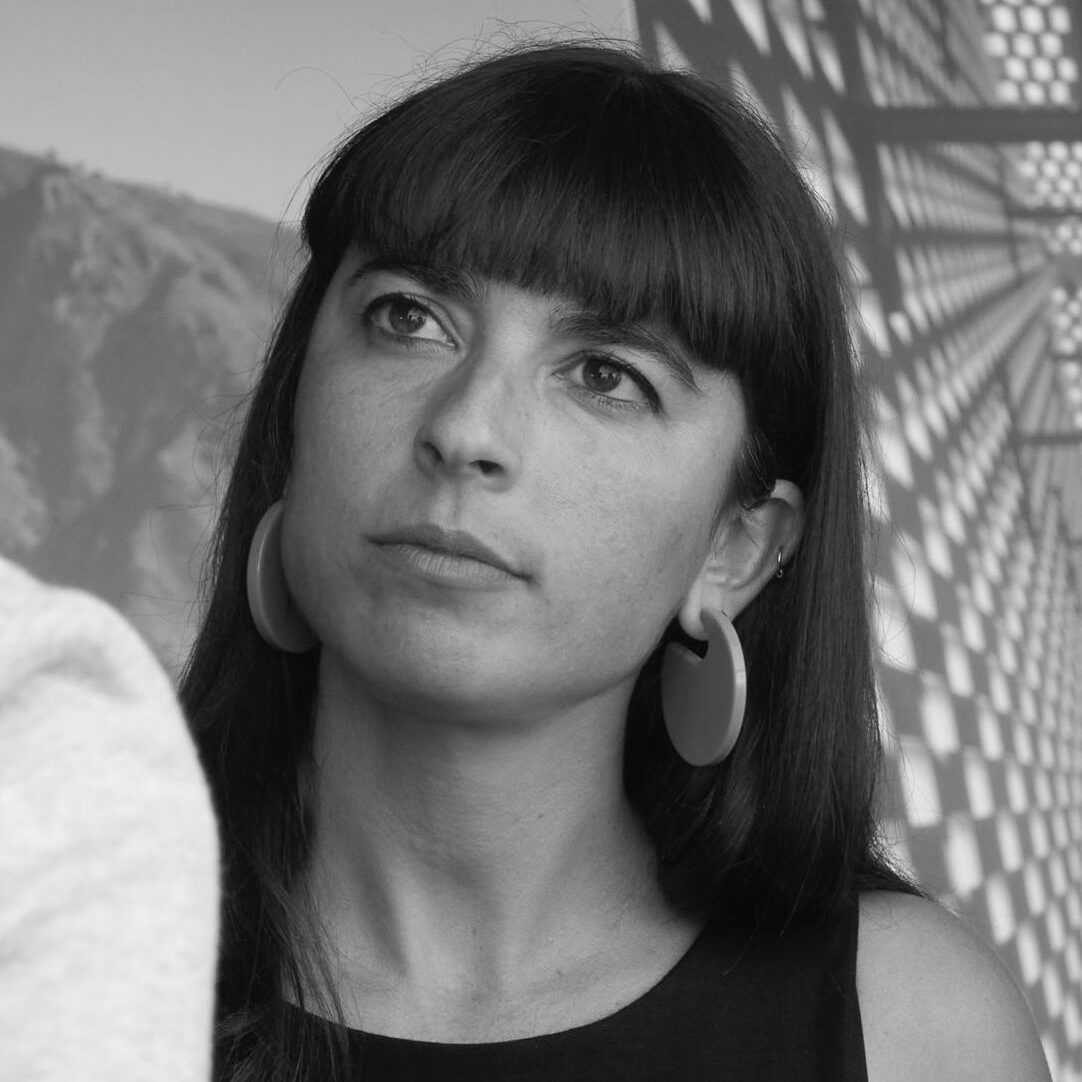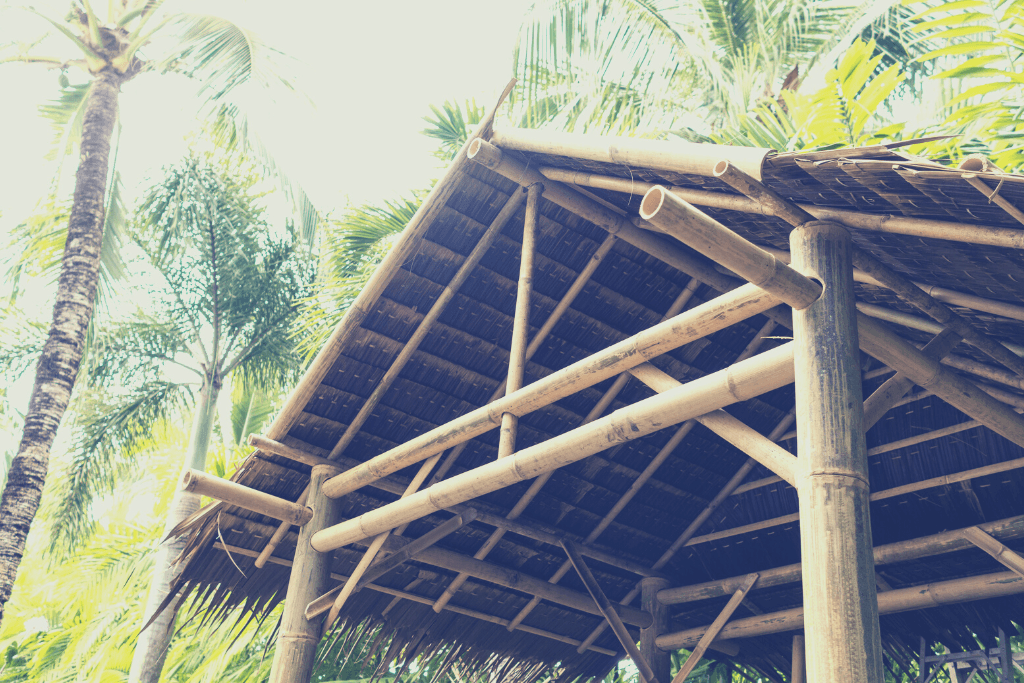The Gruen effect describes a psychological phenomenon where people, when immersed in a meticulously designed environment, lose their spatial or temporal orientation and become more receptive to external stimuli.
This concept, conceived by architect Victor Gruen, is leveraged in architectural design to foster immersive experiences that influence human behavior, encourage spontaneous exploration, and often lead to unplanned choices.
Originally developed for retail spaces to shape consumer behavior, the Gruen effect has since been applied to urban planning and the design of public spaces.
The Origins of the Gruen Effect and Modern Shopping Malls
Victor Gruen, an Austrian-American architect, did not set out to “invent” the Gruen effect as a psychological phenomenon. Instead, his architectural designs and projects inadvertently facilitated the understanding of this behavioral dynamic.
Gruen is celebrated as the father of the modern shopping mall, having designed the first suburban shopping centers in the United States during the 1950s. His ambitions extended far beyond merely crafting spaces for commerce.
He envisioned shopping malls as community hubs—modern plazas for the American suburbs where people could not only shop but also socialize, stroll, and enjoy cultural and recreational activities.
The Main Characteristics Behind the Gruen effect

Victor Gruen’s designs captivated visitors with non-linear pathways, natural lighting, vegetation, and architectural details that encouraged exploration, aiming to create pleasant and engaging environments.
These spaces were intended to foster relaxed and impulsive behaviors, encouraging visitors to linger and, often, to make spontaneous purchases or engage in unplanned actions, thus promoting spontaneity. Ironically, Gruen aimed for visitors to feel less like consumers and more like active participants in a dynamic and stimulating environment.
5 Projects That Tell the Psychology of Architecture Through the Gruen Effect
Gruen grew increasingly disillusioned with how his concepts were marketed. Shopping malls devolved into mere conduits for consumption, stripped of the cultural and communal elements he had envisioned. The Gruen effect, rather than fulfilling a social function, was harnessed to boost sales by manipulating consumer behavior towards unplanned purchases.
Reflecting critically on his legacy, Gruen eventually disowned the malls associated with his name. Despite this, his principles have been applied in numerous modern and contemporary projects, demonstrating how contemporary architecture can manipulate visitor behavior through emotional design. These projects utilize the Gruen effect to enhance engagement and extend the duration of visits in both commercial and public spaces.
The Mall of America (Minnesota, USA)
Opened in 1992 in Bloomington, Minnesota, the Mall of America stands as the largest shopping center in the United States and exemplifies the application of the Gruen effect in its design.
Beyond its 520 stores, the mall features attractions such as amusement parks, aquariums, and themed food courts, which serve as significant behavioral catalysts:
- Labyrinthine layout: The mall’s design intentionally complicates navigation with its maze-like arrangement, broad intersections, and limited direct sightlines, encouraging exploration.
- Entertainment and attractions: Features like rides and shows not only enhance the visitor experience but also instill a sense of wonder, motivating guests to extend their visits.
- Functional mix: By incorporating non-purchase activities such as cinemas and events, the mall dilutes the pure consumerist intent, leading visitors to engage in a variety of experiences, thus disrupting their initial shopping-focused agenda.
Dubai Mall (Dubai, United Arab Emirates)
The Dubai Mall, renowned for being the world’s largest shopping mall by the number of shops (approximately 1,200), is famous for its iconic attractions like the Dubai Fountain and the indoor aquarium.
The sheer scale and grandeur of the mall make it a destination in itself. Here are some key strategies it employs that embody the Gruen effect to subtly influence visitor behavior:
- Monumental Attractions: Features like the aquarium and indoor waterfall distract visitors from direct paths, prompting spontaneous exploration.
- Fluid zoning: The mall’s design avoids strict demarcations between shopping and entertainment areas, allowing a seamless and often subconscious transition between activities.
- Immersive atmosphere: The use of soft lighting, diffused fragrances, and ambient music creates a sensory environment designed to disorient time perception, encouraging visitors to stay longer than planned.
Times Square and The High Line (New York City, USA)
Times Square, one of the world’s most iconic urban squares, is celebrated for its dazzling array of bright screens, Broadway theaters, and vibrant energy that draws millions annually. Here are some ways the Gruen effect manifests here:
- Sensory overload: The giant LED screens, billboards, and neon lights offer continuous visual and auditory stimuli that can disorient and encourage visitors to linger.
- Hybrid spaces: Beyond being a mere intersection, Times Square serves as a pedestrian plaza featuring relaxation areas, public events, and spaces that encourage social interactions, inviting exploration beyond the main pathways.
- Unpredictability: The area’s constant bustle with street performers, surprise events, and flash mobs disrupts ordinary expectations and maintains visitor interest, promoting spontaneous exploration.
Opened in 2009, The High Line is an elevated park created from a disused railway line in Manhattan, a collaborative design by the architectural firm Diller Scofidio + Renfro, landscape architects James Corner Field Operations, and Piet Oudolf.
This linear park serves as an urban oasis and a city balcony that encourages leisurely exploration through its engaging design:
- Fluid and unpredictable paths: The pathway features a mix of open spaces, green areas, and resting points that disrupt the linear progression, encouraging visitors to pause and alter their route.
- Immersive details: Art sculptures, temporary installations, and unique viewpoints along the High Line transform each segment into a distinct experience, fostering aimless wandering.
- Sensory atmosphere: The meticulously maintained natural settings, coupled with views of the cityscape, craft a calming yet captivating ambiance that subtly distracts from the urban environment around it.
Superkilen Park (Copenhagen, Denmark)
Superkilen Park, set in a multicultural neighborhood of Copenhagen, is a collaboration between the art collective Superflex, the architecture firm BIG – Bjarke Ingels Group, and landscape architects Topotek1.
This urban park is designed to celebrate cultural diversity by incorporating themed spaces filled with objects and influences from over 60 countries. Here’s how the Gruen effect is applied in Superkilen:
- Unconventional zoning: The park is segmented into three main areas—Red Square, Black Park, and Green Park. Each area boasts unique designs that disrupt conventional flow and encourage exploration of every corner.
- Interaction and curiosity: Strategically placed urban objects, like a Brazilian bench or a Moroccan fountain, capture visitor interest and provoke curiosity, leading to spontaneous exploration.
- Play and involvement: The park seamlessly integrates spaces for sports, relaxation, and play, crafting an engaging and enjoyable environment that encourages visitors to prolong their stay.
Apple Park Visitor Center (Cupertino, USA)
Designed by the renowned Foster + Partners and inaugurated in 2017, the Apple Park Visitor Center serves as both an extension of Apple Park and a gateway into the Apple brand experience.
It functions as a commercial space and offers an immersive visitor experience with exhibition areas, an Apple product showroom, and a rooftop terrace overlooking Apple Park. Here’s how the Gruen effect is applied:
- Smooth transition between public and commercial space: The center’s open, fluid layout blurs the lines between exhibition and sales areas, allowing visitors to explore without the overt pressure of commerce.
- Sensory focus: Employing natural light and warm materials like wood and glass, alongside finely crafted furnishings, the center engages the senses and encourages longer visits.
- Distractions: Beyond mere product displays, the center features areas dedicated to Apple’s history and philosophy, capturing visitor interest and deepening their engagement with the brand universe.





